Continuing the ongoing series of interviews with creative artists working on various aspects of movie and TV productions, it gives me great pleasure to welcome Adriana Serrano. Her work spans the worlds of feature film, television, theater, commercials, music videos and short film, and in the last few years she worked as the production designer on “Arcadia”, “August”, “California Winter” and “Afternoon Delight”. In this interview Adriana talks about splitting her time between her various projects, the smaller scale of independent feature film productions, approaching the script and translating it into environments that live and breath around the cast, the changes we’re seeing in how storytellers bring their worlds to large and small screens around us and how the world of indie films is evolving in the last few years, and a deeper dive into the particulars of “Afternoon Delight”.
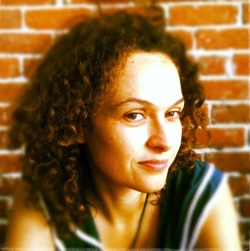 Kirill: Please tell us about yourself and how you got into the industry.
Kirill: Please tell us about yourself and how you got into the industry.
Adriana: My name is Adriana Serrano and I’m from Colombia. Originally I’ve studied fine arts in Bogota and in 2000 I’ve moved to New York. I was very interested in installation art and drawing and at that moment I was looking to learn something else, but I didn’t know what it was. I didn’t think it was film, it just didn’t occur to me, i was looking at the time to learn a technical skill. And then I saw a sign in La Mama Theater that a theater designer named Watoko Ueno was looking for interns, I met him and started working with him. I thought that set design was very similar in a lot of aspects to what I was doing in my installation work – working with the space and the colors and the space. I was fascinated with the stage
I decided to study set design, did a lot of theater in NY and then I transitioned to film design. My first short movie was in New York in 2003, a film thesis for Columbia University, and then I went back to Colombia, got offered a job teaching and started working on episodic TV. I learned a lot from my experience on television, and since then I’ve just been working on movies. I did move again in 2009 to Los Angeles where i continued working as a production designer.
Kirill: And it’s not only movies, as your work spans music videos, theater and commercials.
Adriana: I do enjoy designing anything that works with a 3d space. I like the challenge, and It’s very different working on a feature than working on a music video than working on a commercial, they have different needs. I would like to do other things as well outside of the film world. I think that production design is working with the space, working with the concept and working with a team of people. There’s plenty of things that I would like to do like concert design, events, and anything that involves creating an experience for an audience.
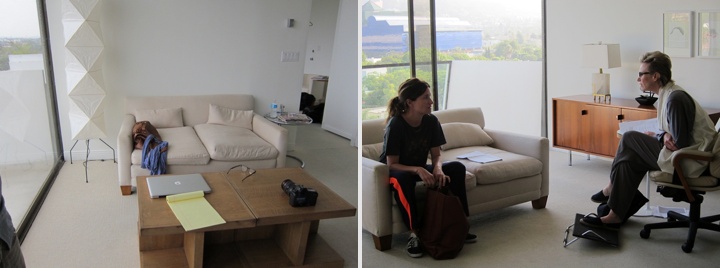
Phychiatrist’s office set, courtesy of Adriana Serrano.
Kirill: When do you usually start the production cycle of a feature film?
Adriana: Production designers are one of the key elements and are hired early on. Everything happens very fast. I get a call for an interview, I have to read the script and I have usually two or three days to prep for the interview. I meet the director and the producer, and pitch them my vision of the story. When I go into a job interview and i have to sell a world that is not visual yet and invisible, a world that only exists yet on paper.
In most cases the director has been working on that idea for a long time even years if he or she is the writer. That first encounter is always interesting to me. The perception of the script changes so much after meeting the director, feeling the direction that the story can take.
Kirill: Are you expected to bring some sketches?
Adriana: I don’t think necessarily I am expected to bring any, but I usually bring visual research and references that inspire me. It might be a color palette, photos, art work, references for the characters. Its easier for me to establish a conversation based of some references, I believe an image can explain so much than words can.
Kirill: How do you know that clicks?
Adriana: [laughs] It’s really strange. My background is very conceptual and for me production design it’s much more than aesthetics, it’s a key element part of the storytelling. Sometimes the connection is unbelievable. I would start showing photos and they’d say that this was exactly what they had in their head. And sometimes they’d say that they didn’t think about that and it may be interesting. And sometimes you think that the connection is great and then nothing happens. Or simply the language its different and there is not much in common. Very much like chemistry in a relationship.
It’s always different and it also depends on many different factors. Getting a production designer hired is like casting an actor, i think. Sometimes they think it’s a good fit based on the personality, or the story, or the other movies they have done. And sometimes we talk about other things like life in general or other movies.
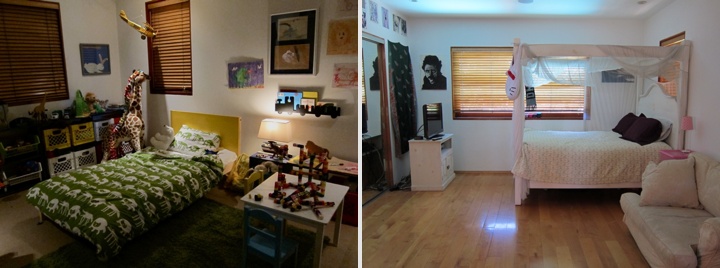
Kids’ bedroom, courtesy of Adriana Serrano.
Continue reading »
Continuing the ongoing series of interviews with creative artists working on various aspects of movie and TV productions, it gives me great pleasure to welcome John Lavin. In the last few years he worked as the production designer on “Your Sister’s Sister”, “Touchy Feely”, “Lucky Them” and the recently released “Laggies”. In this interview John talks about splitting his time between feature film world, interior design projects and illustration work, the smaller scale of independent movie productions, approaching the script and translating it into environments that live and breath around the cast, the changes we’re seeing in how and where people consume content and the effect it’s having on the world of indie films, and a deeper dive into the particulars of “Your Sister’s Sister” and “Laggies”.
Kirill: Please tell us about yourself and your busy professional life doing feature film work, interior design and illustration work.
John: A lot of that is driven by me living in Seattle rather than in, say, Los Angeles. There’s not a lot of feature production happening here, and I have always had the idea that it’s better to be a generalist than a specialist. It works better for me to have a lot of irons in the fire, to work in different directions.
I was in New York, going to graduate school for painting. I was living there, doing jobs as a retail display person. I worked doing the windows at Barneys, and from there moved to art department work, doing photography, video and other projects. It was a combination of retail display, art department and fine arts. I used them all in different ways, and that’s the background that I’m coming from.
When I moved back to Seattle, I did a lot of work as retail designer. My art work translated into illustration work when my second child was born. It was a better economic model for a working parent to get paid upfront for things instead of hoping to sell things later.
And as far as all these fields, it’s really all the same thing. It relates really closely. There’s not that many people that I work with, or that I know, who work in all of these fields, but they’re actually very similar. It’s all about making something look good from a certain point of view. It can be a camera, or a person standing on the street, or walking into a room and having the sense of the space.
Kirill: I’d imagine it also exercises different parts of your brain.
John: Absolutely. The current project that I’m working on involves a lot of set design and a lot of space design. I’m trying to make modular set pieces that can work for different shoots at different times and be reconfigured. It’s about spatial organization and design, more than many other jobs. And other jobs are about visual sensibility or painting sensibility.
Kirill: It sounds like you’re also enjoying the physicality aspect of it.
John: I sure do. I really like painting. I like sculpting. I like making and faking.
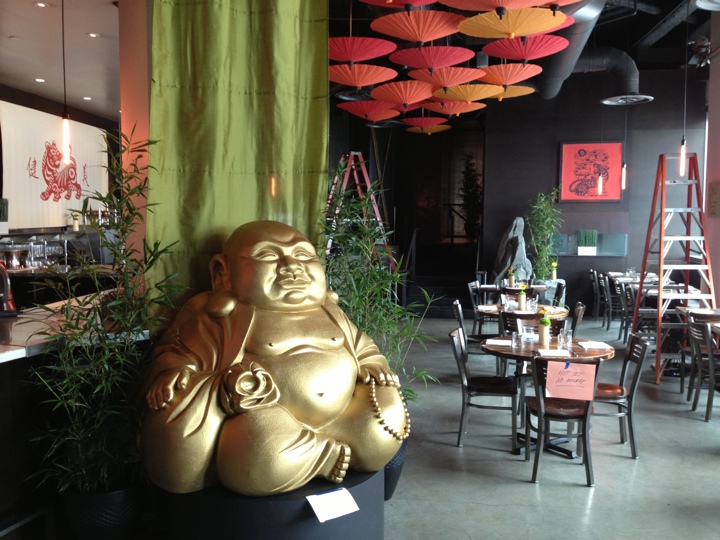
On the restaurant set of “Laggies”. Courtesy of John Lavin.
Kirill: If I jump a bit forward in the interview to your feature work, what do you think about productions driven by virtual sets created with digital tools?
John: I came to work on indie films, and I recently heard them being described as “people talking in a room”. I have an affinity for a movie of that scale.
I like to watch a big movie as much as the next guy, but there’s a certain thing that I don’t relate to well and don’t have a lot of interest in. It’s the CGI ‘Battle that Decides the Fate of the World’ that happens in so many large films. You have two massive armies engaged in a huge battle, and the whole thing feels so completely bogus. I don’t have any interest in that.
I like the idea of a smaller scale feel, and that’s the kind of film that I’m more interested in working on – compared to the effects-driven film.
Continue reading »
Continuing the ongoing series of interviews with creative artists working on various aspects of movie and TV productions, it gives me great pleasure to welcome Steve Saklad. After doing art direction for films such as “The Game”, “Red Dragon” and “Spider-Man 2” for the first part of his career in Hollywood, in the last decade he did production design on a variety of productions including “Juno”, “Up In The Air”, “The Muppets”, “Labor Day” and, most recently, the pilot episode for the TV show “Empire”. In this interview Steve talks about his theatrical background, the changes that the art department is undergoing in the last decades, his involvement in pre-production and production phases of his films and his work on 250 (and counting) commerials. In addition, he takes a deep dive into the production details of the “Empire” pilot, “Up In The Air” and the beautiful atmosphere of “Labor Day”.
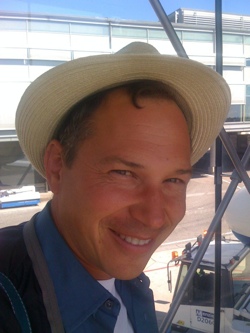 Kirill: Please tell us about yourself and your path so far.
Kirill: Please tell us about yourself and your path so far.
Steve: I’m a theater person deep down. Raised on musical theater since boyhood, I spent all my time in the theater department at my undergraduate college (Brandeis University) and trained in Set Design along with Costumes and Lighting at Yale School of Drama for my graduate degree. I arrived in New York with my sketch and drafting portfolio in the summer of 1981, ready to design my first Broadway show. I designed a few off and off-off Broadway shows during the decade, but primarily was first assistant to the top Broadway set designers on some of the great shows of the 80’s. Little by little, drafting for Broadway seguee’d into drafting for movies. By the 90’s I was a feature Art Director, now living in Los Angeles, and designing commercials on the side. After all that prep time, I was good and ready when my first Production Design opportunities in indie films came along in 2004.
Kirill: What drew you into the world of the art department, and what – if anything – has changed for you since you’ve started working on your productions?
Steve: Like the set design department in theater, the work of the Art department is all about creating a world that didn’t exist before you started. It could be operatic, super-natural or documentarian, it could be the fantasy world of “The Muppets“, or the banal real-world environment of “Up In The Air“. You’re setting the parameters and saying this is what’s important visually to tell the story you want to tell. That’s thrilling.
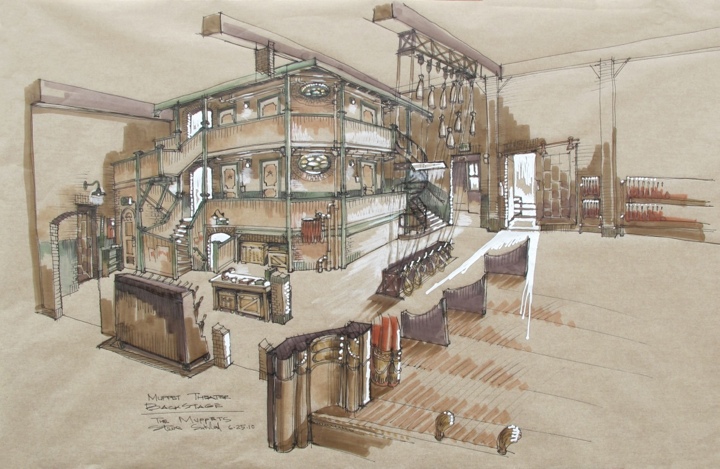
Sketch drawing for the backstage set of “The Muppets”. Courtesy of Steve Saklad.
Changes since I began in the art department— how much time do you have? When I began, we drafted in pencil on velum paper which was then sent through a diazo machine to make a blue-line print. We carried pagers, sent approvals by fax, and kept quarters in our pockets to make emergency phone calls from pay phones on the corner. The computer revolution has changed the outer tools, but not the process. We still assemble moodboards by hand, still page through books for inspiration, still match fabric swatches with paint chips to arrive at a color pallet. Set models are now often digital versions on a computer screen, although I still prefer the old-fashioned 1/4″ paper models. I still find my way to a design by sketching in ink on buff yellow onion-skin paper and adding markers and whiteout to give it life. But I’m admittedly a relic of another time compared to most designers I know.
Kirill: You’ve spent the first half of your career so far as an art director. What have you carried with you as you transitioned into the role of the production designer, and how does that affect your working collaboration with your art directors?
Steve: It’s a great question. I know the nuts and bolts of running an art department as well as construction, paint and greens departments, I know how budgets are structured and what designs generally cost because I did that job for almost 15 years. I hope that means I’m more compassionate to my art directors, knowing what they’re going through to make our designs come to life. I’ve also been blessed with getting to work with some amazing Art Directors under me, who have taught me far more than I could ever teach them. It’s definitely a two-way street.
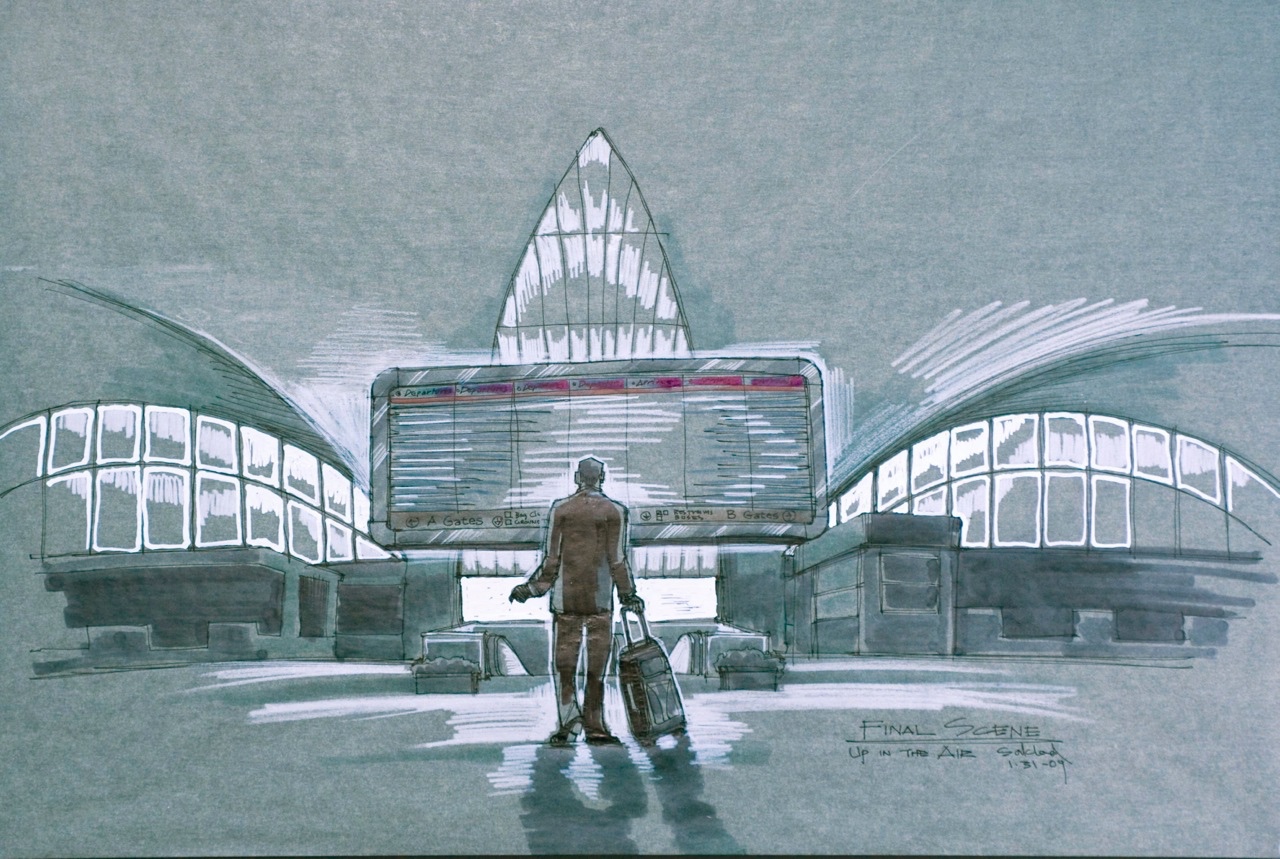
Sketch drawing for the final scene in “Up In The Air”. Courtesy of Steve Saklad.
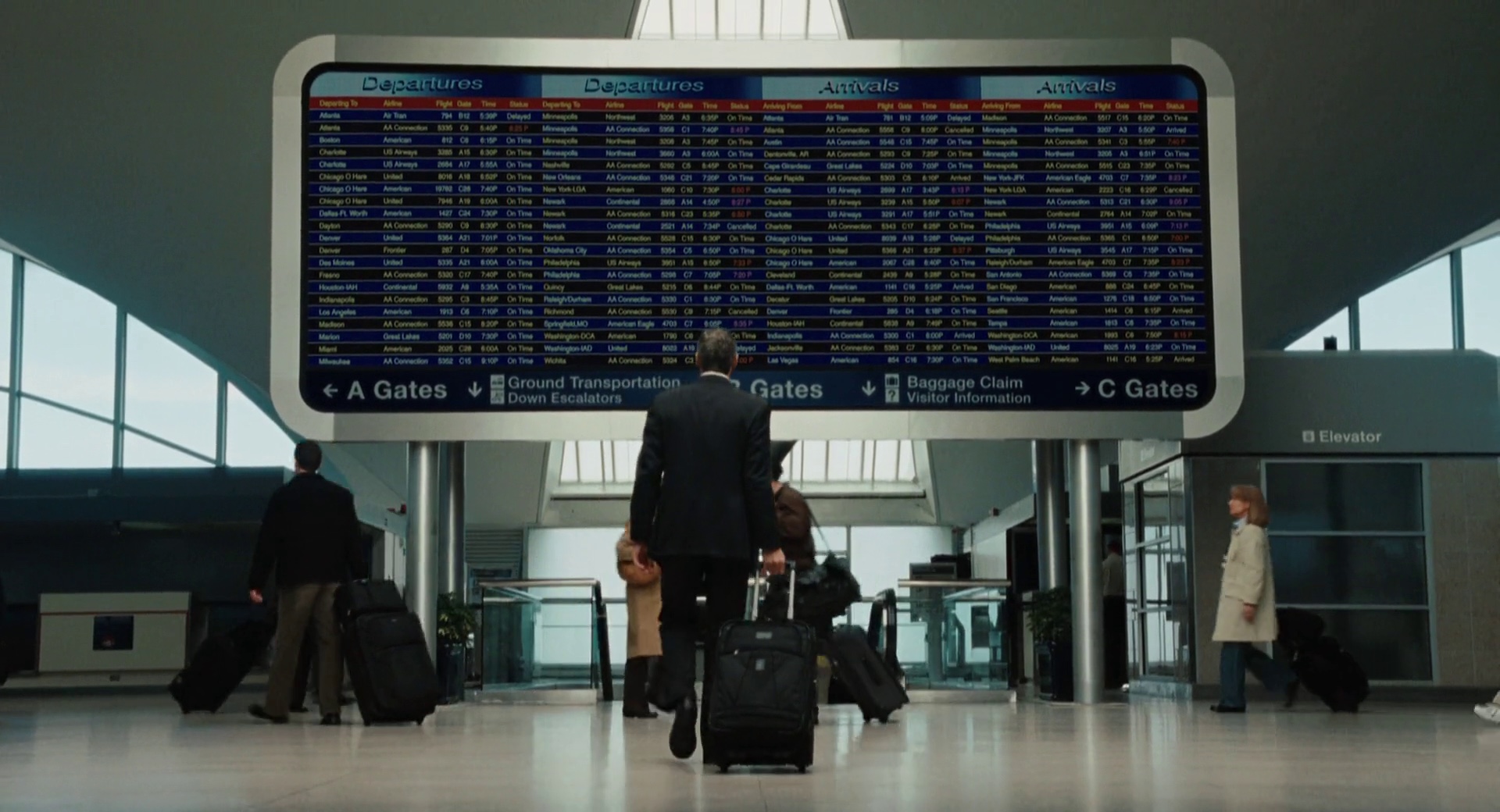
The final still from the movie.
Continue reading »
Continuing the ongoing series of interviews with creative artists working on various aspects of movie and TV productions, today I’m honored to welcome Caity Birmingham. Over the last few years she held the roles of production designer, art director and set decorator on multiple feature film and TV productions, mixing it with working on sketch comedy for web and television. In this interview she talks about what drew her away from directing into the world of the art department, the frantic world of web comedy productions, the ever-increasing diversity of platforms for creating and consuming content in the digital world that surrounds us, and her work as the art director on the recently released “White Bird in a Blizzard.”
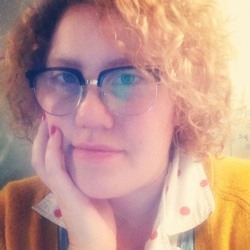 Kirill: Please tell us about yourself and your path so far
Kirill: Please tell us about yourself and your path so far
Caity: I went to school for directing but discovered I much prefer directing inanimate objects to directing actors. I enjoy working in the art department because it still allows me to participate in character development, backstory, tone, mood and setting in a very hands-on way. I got to Los Angeles about five years ago, and worked on anything I could in any aspect of the art department just to meet people and learn things. During the first few years I learned that “internship” can be a dirty word, and you never know which jobs are going to lead to big breaks or long-lasting collaborative relationships; often it’s the ones you least expect. I’ve happily tried every art dept. job from set dresser to production designer. Around the time I was meeting great art people in Los Angeles and getting to work as set dresser on movies like “Like Crazy”, I production designed my first feature “The Wise Kids“, directed by Stephen Cone. I met him through some mutual Chicago friends and filmmakers, and have since designed three features for him. I really value those kinds of ongoing collaborations. I was also lucky enough to meet some great production designers who invited me onto their teams in various roles, including Todd Fjelsted, who production designed “White Bird in a Blizzard”, and hired me as his art director.
My experience so far has been in small independent films (“White Bird” is actually one of the largest films I’ve worked on) and sketch comedy. My friend Katie Byron, another production designer I was lucky enough to meet and work with, who production designed “Like Crazy” and a bunch of other wonderful films, connected me with “Funny or Die” soon after I got to Los Angeles, and I worked on probably 40-50 of their web comedy sketches in between working on movies and other projects. I also interned at Abso Lutely Productions back in 2010 (one of my better internship experiences) and in a very roundabout way ended up back at that company this past year, taking over for Katie as production designer on “Comedy Bang! Bang!”, which is a little sketch comedy/talk show on IFC.
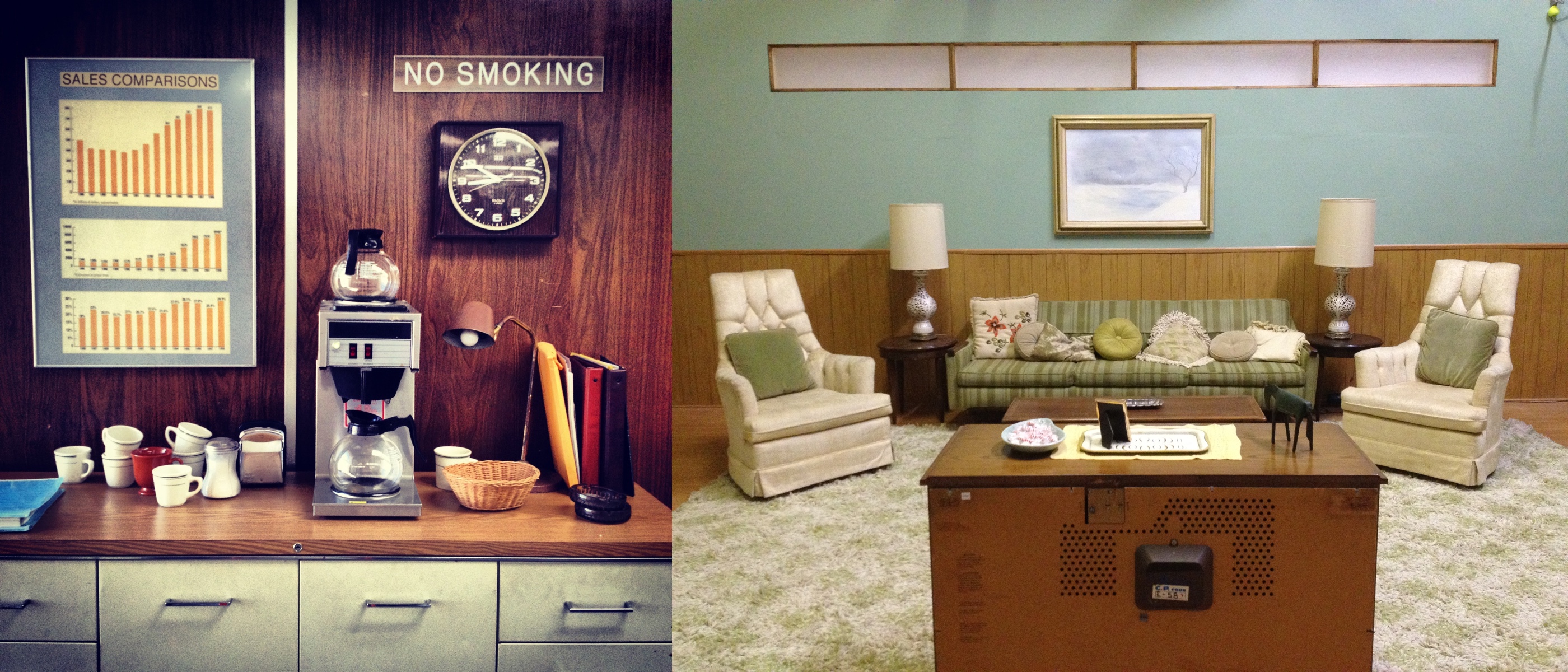
On the sets. Courtesy of Caity Birmingham.
Kirill: What drew you into the business, and how has that changed during the years that you’ve been working on different sets?
Caity: As an undergraduate, I was studying art at a small liberal arts school and at the same time watching tons of movies (this was before Netflix, so I was basically going row by row at the video store), and slowly realizing I wanted to work in film, but not really knowing what that meant. So I assumed I wanted to be a director and went to graduate school to figure it out. I feel really lucky to have stumbled into the art department. Like, how is there this job that combines so many of the things that interest me and that I happen to be good at? Since trying to work professionally in Los Angeles, that feeling has definitely evolved into something a little less purely optimistic. I’ve been paid next to nothing to put my hard work and creativity into projects I found fairly worthless, but for every soulless project there is another great little project with an amazing script and a delightful crew.
Kirill: You’ve been taking diverse roles in the art department – set decorator, art director, production designer. Does that explore different creative parts of your brain? Do you want to avoid repetitiveness in what you do?
Caity: One great thing about the art department is that each job is entirely different, requires different skills and presents different challenges, so repetitiveness is never a problem. I have learned that the best skills you can have are adapting quickly, communicating clearly, and solving problems creatively, and those skills apply to all projects and all art department roles, just in different ways. When I started working in Los Angeles, I was just hungry for any art department job I could get, and the experience was equally valuable whether I was working for and learning from other production designers, or figuring out how to be the production designer myself. Working in a variety of roles has definitely given me a greater appreciation for what everyone else in my department is dealing with. For example, I will never underestimate the work of the on-set dresser. It is a difficult job, and when done well, it adds a tremendous amount to the success of the art dept. and the film/show as a whole.
Kirill: How and when did you join “White Bird in a Blizzard”, and what was your part in the movie?
Caity: Todd Fjelsted is a production designer I’ve been lucky enough to work with on a few projects. He had designed Gregg Araki’s previous film “Kaboom”, as well as a number of other interesting, successful indies. I was already a big fan of the director, Gregg Araki, and when Todd mentioned the project, I told him I’d love to work on it in any capacity. I just got lucky that he needed an art director and trusted me to do it.
Continue reading »
![]() Kirill: Please tell us about yourself and how you got into the industry.
Kirill: Please tell us about yourself and how you got into the industry.![]()
![]()